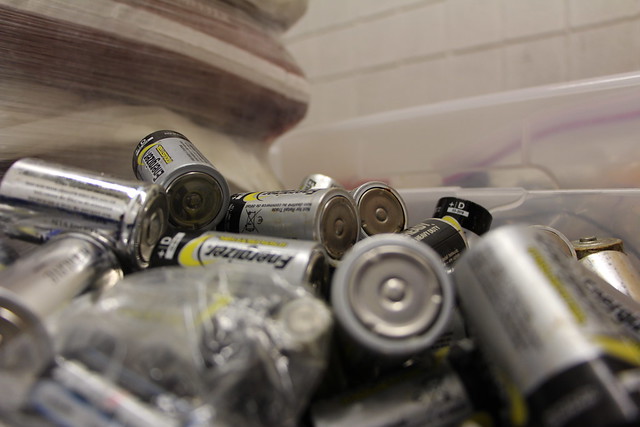What is a lithium-ion battery made of?
Jul 18, 2019 Pageview:1524
Lithium-ion batteries are a group of rechargeable batteries in which electrode moves from negative towards the positive at the time of discharging and return back when it gets charged. Today its demand is growing rapidly. These types of batteries are generally used in mobile phones and cameras. It has now become a power source with a large storage of energy and automotive applications. Most of the users are using lithium-ion batteries as it provides high energy density and numerous discharge cycles. The batteries are more superior to the traditional batteries and have the ability to get recharged at high speed. Today with a change in technology batteries are also getting an upgrade which provides them flexibility at the time of operating and it leads to acid cells. Even the interaction between environment and lithium-ion batteries are mild. In the batteries, there is no gas emission at the time of charging it is due to the inefficiency as it is very low. Many types of chemical are used in the electrode material used in the lithium-ion batteries which makes it active. Each cell in the battery is equipped with different electrical properties and it is important to choose the right kind of cells.
Lithium-ion battery construction and materials
Lithium-ion batteries are made of four types of material such as.
Cathode Material
It is the material which has included with lithium-ion oxides and vanadium oxides, olivines with rechargeable oxides. In this, you can explore layered oxides which contain nickel and cobalt and well-suited materials for batteries. It helps in getting high stability with high voltage range but at the same time, cobalt has limited nature. In the battery mixture of nickel, cobalt, and manganese are generally used with combination and provides the best property and also help in minimizing the drawbacks of the battery. The vanadium oxide present also presents with high capacity and excellent kinetics in the battery. With the insertion and extraction, the material present becomes amorphous.
Anode Material
It is the material which is equipped with lithium, graphite, silicon, intermetallics, and lithium-alloying materials. It is one of the most suitable and straight forward materials but at the same time it creates a problem at the time of cycling and it can have a short circuit. In this most reliable anodic material is carbonaceous anodes due to its low cost and availability. The use of novel graphite with variety and carbon nanotubes helps in increasing the capacity but at the same time, the price of processing is a little bit high. Manufacturers are making so much effort so that they can easily overcome with volume changes. Silicon present in the battery also has a high capacity with composition.
Electrolytes
If you want that battery runs smoothly for a long period then it needs robust electrolyte which helps in standing battery at high temperature and voltage. It also helps in providing high mobility to the battery. It is the liquid which also contains a polymer, liquid, and solid electrolyte. If we talk about liquid electrolyte are present in the organic form which is solvent-based. The most important of the electrolyte is flammability which provides solvent with low boiling point and also includes flashpoint. In the electrolyte, it commonly involves the flammability and electrochemical performance for better working. It also presents with polymer and a solid electrolyte which contains crystal and ceramic glasses.
Separators
As you get to know according to the name and it helps in separating two electrodes physically from eat other. This also helps in preventing short circuit and secures the battery from harmful accidents. The separator is in the form of foam which also helps in soaking the electrolyte and makes them fit in the right place. In the battery, it is included with an electronic insulator which provides minimum resistance and maximum mechanical stability.
How lithium-ion battery is made?
First, the electrode is prepared in which anode and cathode are mixes. Then a thin layer of the carbon is applied to the metal materials.
One of the anode and cathode is running at the same pace. In this lots of raw electrode is trimming.
Then the machine is used to thinner the sheet so it can be folded at any times.
Electrode Creation
First, with the help of a machine, it attaches the tab and cut into proper length.
Once the electrode and anode are made then it was bound together for forming the same size. In the semi-automatic machine, the layers were inserted and folded together many times.
After these layers were folded many times and taped for protecting.
After this, the electrolyte is prepared in a separate room and after preparing all parts they were assembled in one battery.
How does lithium-ion battery work?
Lithium-ion batteries are light in weight and rechargeable batteries. The electrode presents in the battery are made of lithium and carbon. It is equipped with a reactive element which stores lots of energy. This helps in translating high energy density and it is the perfect way to perspective energy density. Nickel metal hydride present in the battery can easily store 100 watts at per kilogram. A lead-acid in the battery also helps in storing 25 watt-hours in per kilogram which provide the amount of energy. In the battery, there is no memory effect it means no need for discharging complete way before recharging. When it gets charged the positive cobalt oxide as it moves towards the negative, graphite electrode and remains in their place. In case the battery gets discharged ions move back towards the positive electrolyte. In both situation electrons present in battery moves in the opposite direction.
The ions and electrons movements are interconnected processes in case it gets stops it means the battery has completely discharged. If you will switch off the battery the flow of electrons will also stops. In this way, the battery will stop discharging at a high rate which will provide a long run to your battery.
- Prev Article: What has lithium batteries?
- Next Article: Where to get 18650 batteries
Leave Message
Hottest Categories
-
Hottest Industry News
-
Latest Industry News











